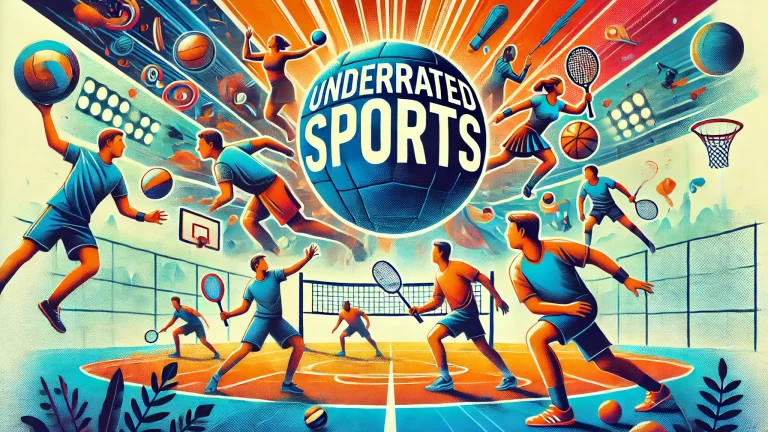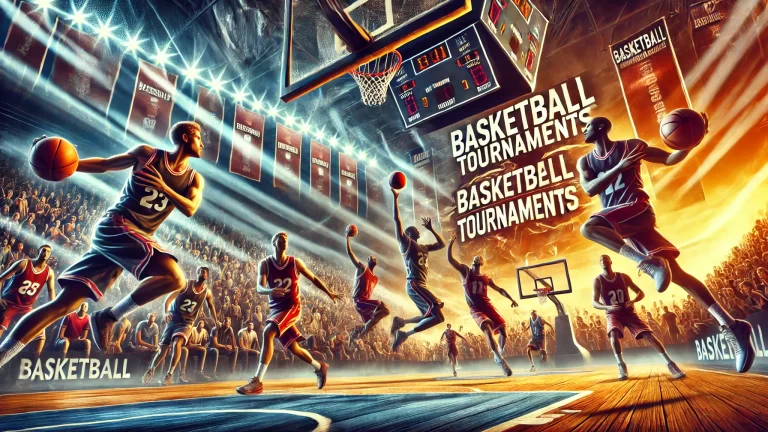In a world where football, basketball, and soccer dominate headlines, many exciting sports fly under the radar. These hidden gems offer unique challenges, rich histories, and passionate communities. Let’s dive into the realm of underrated sports and uncover their appeal.
The Thrill of Hurling: Ireland’s Ancient Game
Hurling, a Gaelic sport with roots dating back over 3,000 years, combines elements of field hockey, lacrosse, and baseball. This fast-paced game deserves more recognition for its skill and excitement.
Hurling involves two teams of 15 players each. They use wooden sticks called hurleys to hit a small leather ball called a sliotar. The aim? To score points by sending the ball through the opponent’s goalposts.
The sport demands a mix of strength, agility, and precision. Players must master techniques like the “hand pass” and the “solo run”. These moves add layers of strategy to the game.
Despite its rich heritage, hurling remains largely unknown outside Ireland. Yet, it offers a spectacle unlike any other sport. The combination of speed, skill, and tradition makes it a true hidden gem.
Hurling’s cultural significance in Ireland cannot be overstated. It’s more than just a sport; it’s a part of the national identity. This deep-rooted connection adds an extra dimension to its appeal.
Sepak Takraw: The Acrobatic Art of Kick Volleyball
Sepak Takraw, popular in Southeast Asia, blends volleyball, soccer, and gymnastics. This sport showcases incredible athleticism and demands exceptional flexibility and coordination.
Players use any part of their body except their arms to keep a rattan ball in the air. They must send it over a net, similar to volleyball. The key difference? No hands allowed.
The sport’s most striking feature is its acrobatic nature. Players perform gravity-defying kicks and spikes. These moves often involve mid-air somersaults, making for a visually stunning display.
Sepak Takraw’s origins trace back to the 15th century in Malaysia. Over time, it spread to other Southeast Asian countries. Today, it’s part of major regional sporting events like the Asian Games. Despite its long history and widespread popularity in Asia, Sepak Takraw remains relatively unknown globally. Its unique blend of skills and spectacle, however, makes it worthy of broader recognition.
Here’s a brief comparison of Hurling and Sepak Takraw:
| Aspect | Hurling | Sepak Takraw |
|---|---|---|
| Origin | Ireland | Southeast Asia |
| Players per team | 15 | 3 |
| Main equipment | Hurley (stick), Sliotar (ball) | Rattan ball |
| Key skills | Strength, agility, precision | Flexibility, coordination, acrobatics |
| Playing surface | Grass field | Court (similar to badminton) |
Kabbadi: The Contact Sport of Strategy and Strength
Kabbadi, a sport originating from ancient India, combines elements of wrestling and tag. This intense game tests players’ physical prowess and tactical thinking.
The basic concept of Kabbadi is simple yet intriguing. A “raider” from one team enters the opposing team’s half of the court. Their goal? To tag as many defenders as possible and return to their own half.
The catch? The raider must do all this while holding their breath and chanting “kabbadi” continuously. This unique rule adds a thrilling time pressure to each raid. Defenders work together to stop the raider, often forming human chains. They can only touch the raider, not tackle or grab them. This leads to intense, strategic encounters.
Kabbadi has gained popularity in South Asia and is the national sport of Bangladesh. Its mix of physical contact, strategy, and endurance makes it an exciting spectator sport. Despite its growing fanbase in Asia, Kabbadi remains largely unknown in the West. Its unique rules and fast-paced nature, however, give it potential for wider appeal.
The world of sports is vast and diverse, extending far beyond the mainstream games we often see on television. Hurling, Sepak Takraw, and Kabbadi are just a few examples of the hidden gems waiting to be discovered.
These underrated sports offer unique experiences for both players and spectators. They showcase different skills, strategies, and cultural traditions. By exploring these lesser-known athletic pursuits, we can broaden our understanding of sports and appreciate the diversity of human physical achievement.
As we’ve seen, each of these sports has its own rich history and devoted following. They may not have the global reach of soccer or basketball, but they’re no less thrilling or worthy of attention. Perhaps it’s time for these hidden gems to step into the spotlight and receive the recognition they deserve.


